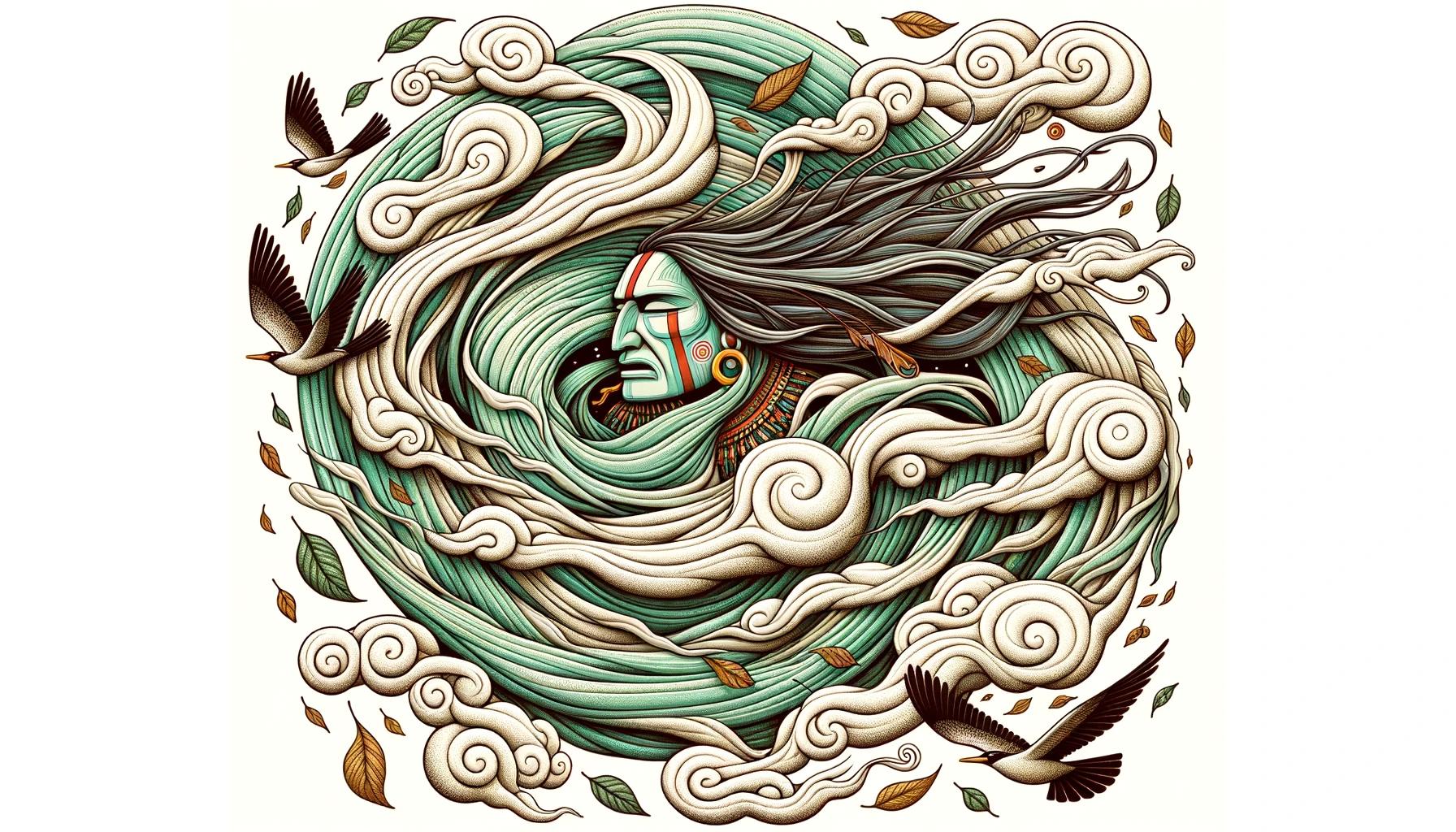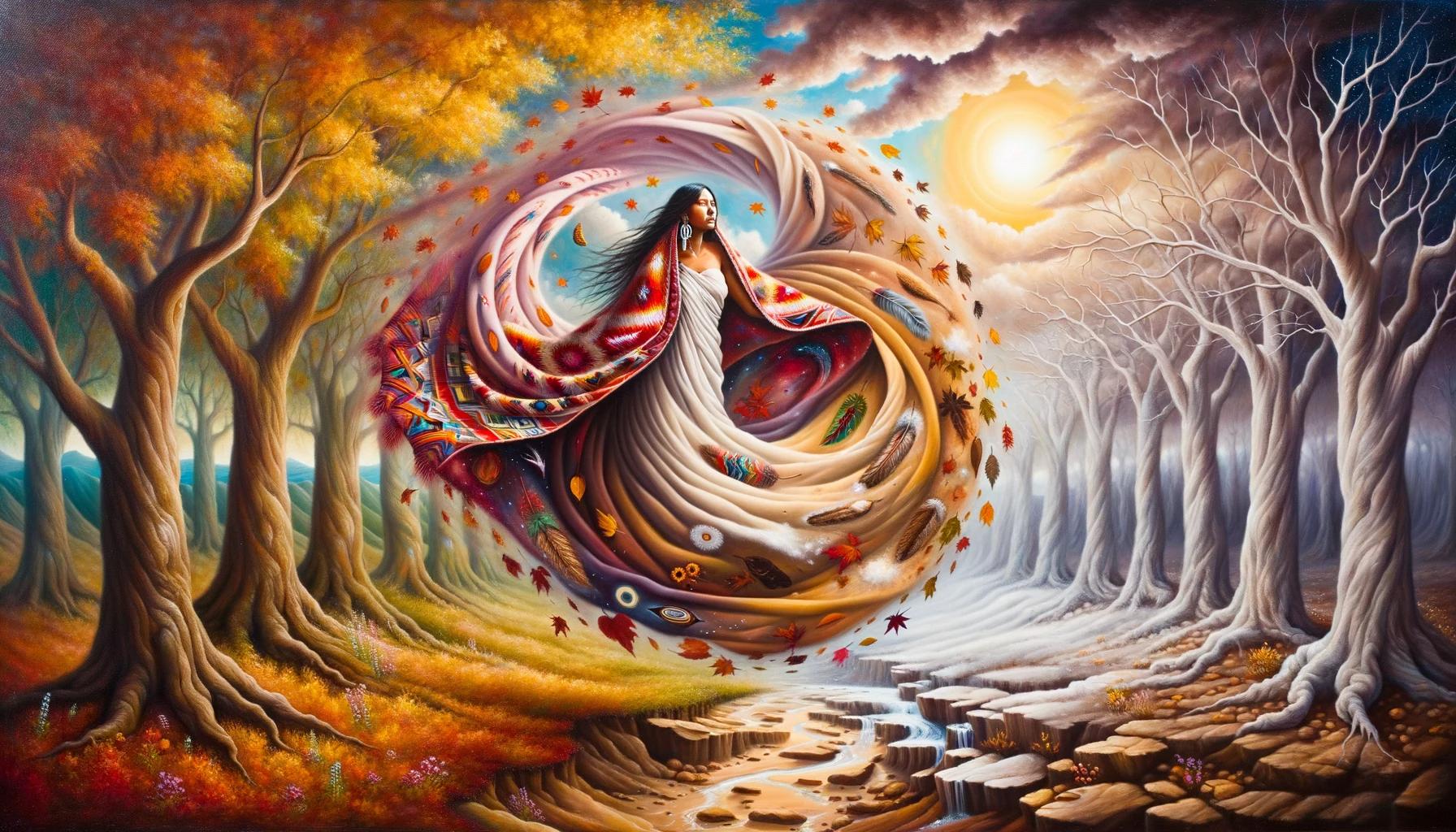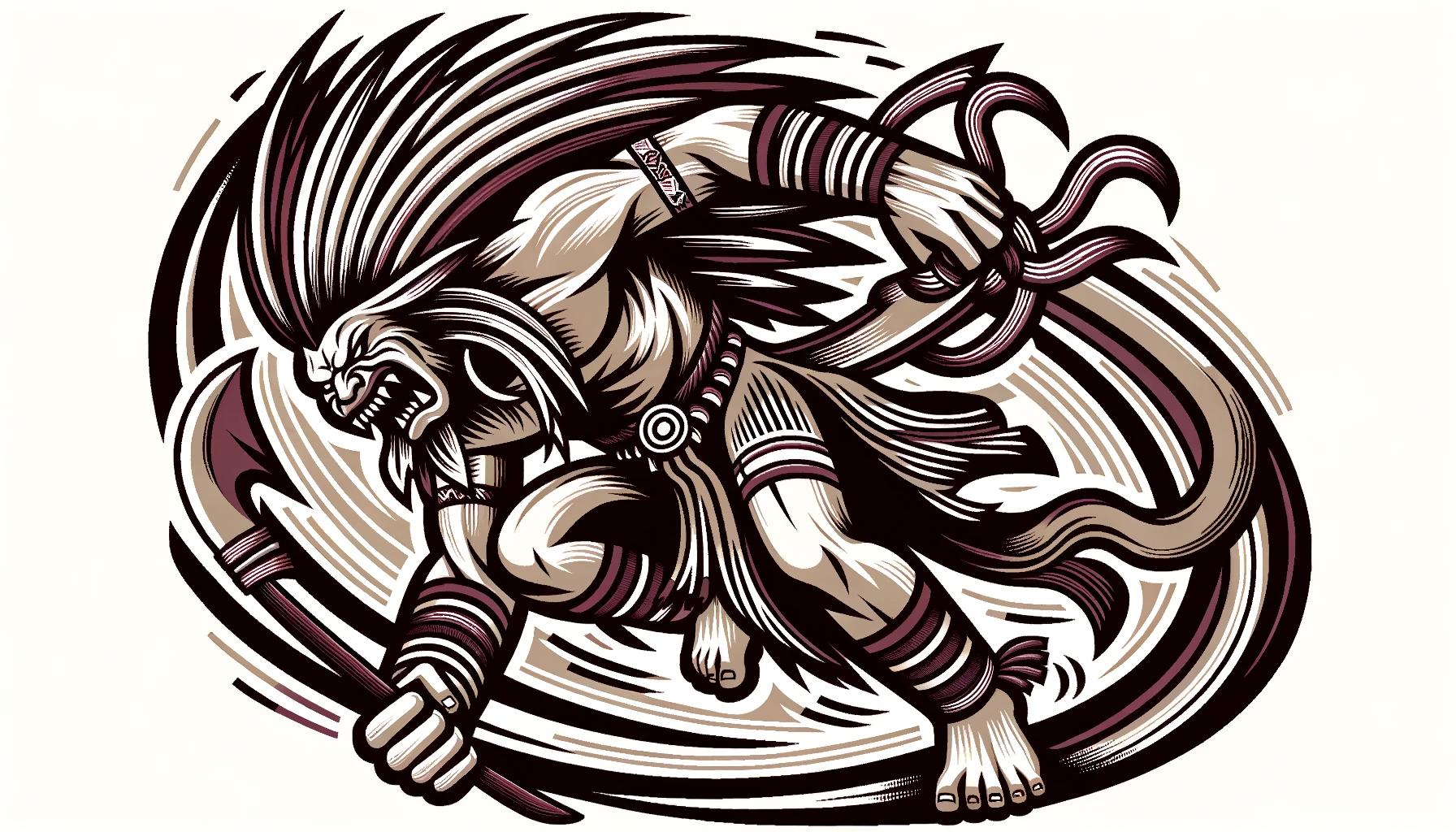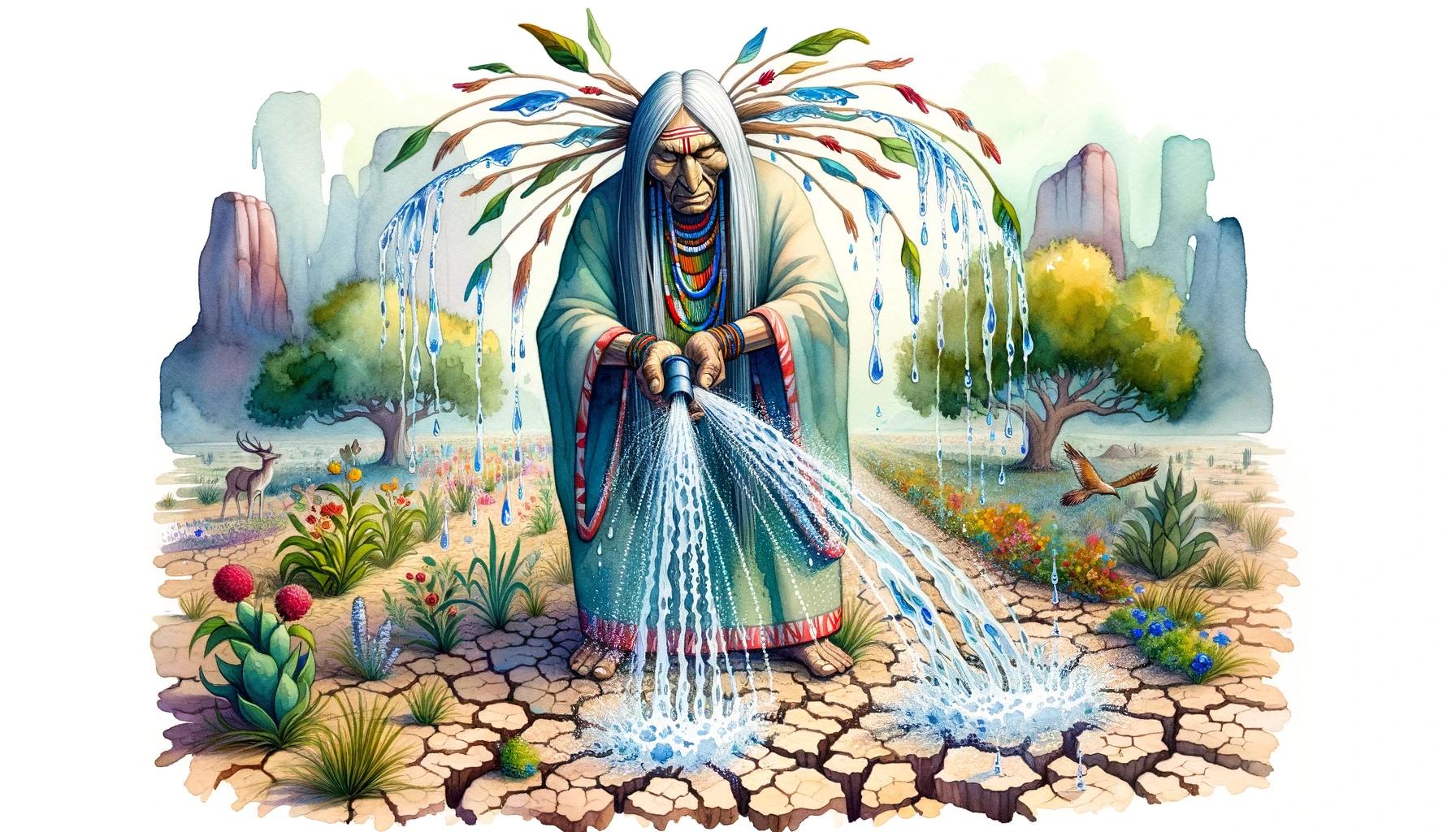Exploring the Powerful Niltsi God Navajo in Native American Culture

Navajo mythology holds Niltsi god in great reverence, recognizing the significance of this deity in their cultural belief system. This ancient wind god is associated with creation stories, rituals, and ceremonies within Navajo traditions.
Comparisons can be drawn between Niltsi and wind deities in other religions, showcasing both similarities and unique aspects. The power of Niltsi extends into daily life, influencing agriculture, hunting, and other essential activities.
Furthermore, Niltsi plays a crucial role in Navajo spirituality and healing practices, with shamans utilizing wind-based rituals and chants. This article explores the rich tapestry of Navajo beliefs surrounding Niltsi, examining controversies and misconceptions along the way.
The significance of Niltsi in Navajo Mythology
In Navajo mythology, Niltsi holds immense significance as a central god within their belief system. Revered as a deity of the wind, Niltsi represents the power and influence of this natural force on Navajo culture and spirituality.
Within Navajo mythology, the wind is considered a vital element that shapes the world and connects the physical and spiritual realms. Niltsi is believed to govern the wind and its various manifestations, symbolizing the invisible yet palpable forces that surround and impact the Navajo people.
Niltsi’s role in Navajo mythology goes beyond just the physical phenomenon of wind. The Navajo people view Niltsi as a spiritual being who can bring blessings, protection, and guidance. Niltsi is perceived as a wise and benevolent force, offering insight and support in times of need.
The wind, under Niltsi’s domain, is also seen as a conduit for communication between humans and the divine. It is believed that messages can be carried through the wind, allowing for connections to be forged with supernatural entities.
This belief underscores the sacred nature of wind to the Navajo people.
In Navajo ceremonies and rituals, Niltsi is invoked to establish a direct connection with the spiritual world. These rituals often involve the use of wind as a medium through which prayers are carried and answered.
By invoking Niltsi’s power, the Navajo people seek spiritual guidance and seek to maintain harmony and balance within their communities.
Niltsi’s significance in Navajo mythology is deeply intertwined with the cultural identity of the Navajo people.
It serves as a reminder of their connection to the natural world and their deep respect for the forces that govern it. By honoring and recognizing Niltsi’s influence, the Navajo people find solace and a sense of belonging in their rich spiritual heritage.
Exploring the Origins and Legends of Niltsi
Niltsi, a revered deity in Navajo mythology, holds a rich history and intriguing legends that have been passed down through generations. This section delves into the profound origins of Niltsi, shedding light on the creation story and its significant role within the Navajo belief system.
The Creation Story and Niltsi’s Role
According to Navajo tradition, the world was formed through a series of intricate events orchestrated by supernatural beings. In the creation story, Niltsi emerges as a vital force, embodying the power of wind and air.
It is believed that Niltsi’s breath breathed life into the universe, bringing forth the elements necessary for the existence of all living beings.
This wind god’s role in the creation narrative showcases its importance as a divine entity, shaping the very fabric of Navajo cosmology.
Niltsi’s influence extends beyond the physical realm, intertwining with spiritual and cultural aspects of Navajo life.
Navajo Rituals and Ceremonies Associated with Niltsi
In Navajo culture, the reverence for Niltsi is palpable in various rituals and ceremonies. The Navajo people perform specific practices to honor and seek the blessings of this powerful wind god.
- The Wind Chant Ceremony: This sacred ceremony focuses on invoking the presence of Niltsi through rhythmic chants and intricate movements. Participants engage in a collective effort to connect with the deity, seeking guidance, protection, and harmony in their lives.
- The Pollen Path Ceremony: As a symbol of renewal and purification, the Pollen Path Ceremony involves the use of pollen to create protective and healing patterns.
Niltsi’s presence is invoked to bring harmony and balance to individuals and the community as a whole.
- The Blessing Way Ceremony: In this elaborate ritual, Niltsi’s blessings are sought for various life milestones, such as birth, marriage, and healing journeys.
The ceremony aims to invoke the deity’s influence, granting empowerment, protection, and well-being to those involved.
These rituals and ceremonies reflect the deep respect and connection that the Navajo people hold for Niltsi, recognizing its role as a spiritual guide and source of strength in their lives.
The Symbolism and Meaning of Wind in Navajo Culture
In Navajo culture, wind holds deep symbolism and meaning, representing a powerful force that influences various aspects of life. It is believed that wind carries messages from the spiritual realm and acts as a bridge between the physical and the metaphysical world.
The Navajo people recognize the wind’s role in shaping their environment and acknowledge its significance in their daily lives.
Wind is considered a living entity in Navajo culture, possessing its own consciousness and purpose.
It is believed to have the ability to communicate and interact with humans, animals, and other elements of nature. The wind, or “nilch’i” in the Navajo language, is seen as a guiding force, providing insights, warnings, and blessings to those who are receptive to its messages.
One of the central aspects of wind symbolism in Navajo culture is its association with life and breath. The wind is seen as the breath of the Earth, the vital force that sustains all living beings.
The gentle breeze represents the soothing breath of a mother, bringing comfort and peace. On the other hand, strong gusts and stormy winds are seen as powerful and transformative, capable of bringing change and renewal.
In Navajo ceremonies and rituals, wind plays a crucial role, as it is believed to carry prayers and offerings to the spiritual realm. During these practices, individuals often face the direction of the wind, both as a sign of respect and to enable the wind to carry their prayers and intentions.
Wind is seen as a companion and guide in spiritual journeys, assisting individuals in connecting with the divine and accessing higher realms of knowledge.
The Four Cardinal Directions and Wind
In Navajo cosmology, the four cardinal directions hold great significance, each associated with a specific type of wind. The east is connected to the dawn and represents the gentle and nurturing breeze, symbolizing new beginnings and renewal.
The south is associated with warmth and growth, characterized by the lively and invigorating wind. The west represents the setting sun and is related to change and introspection, with its wind bringing introspective and transformative qualities.
Lastly, the north is associated with the harshness of winter, symbolizing wisdom and resilience.
- The East: Gentle breeze, new beginnings, and renewal
- The South: Lively and invigorating wind, warmth and growth
- The West: Introspection and transformation, characterized by wind that brings change
- The North: Harshness of winter, symbolizing wisdom and resilience
Understanding the symbolism and meaning of wind in Navajo culture provides insights into their profound connection with nature and their recognition of the spiritual forces that shape their lives.
The wind serves as a reminder of the interconnectedness of all beings and the importance of harmony and balance within the natural world.
Comparing Niltsi to Other Wind Deities in Different Religions
The worship of wind deities is not limited to the Navajo culture.
Many other religions and indigenous belief systems also recognize and revere their own wind gods. Comparisons between Niltsi, the wind god in Navajo mythology, and other wind deities from various religions can highlight intriguing similarities and differences.
Navajo Wind Gods vs. Greek Wind Gods
In Greek mythology, the wind gods were known as the Anemoi. They were considered the rulers of the different wind directions and played significant roles in controlling natural elements such as storms and breezes.
While Niltsi shares similarities with the Anemoi in terms of their control over wind and storms, their origins, symbolism, and cultural contexts differ greatly.
Navajo Wind Gods vs. Aztec Wind Gods
The Aztec religion also had wind gods in its pantheon.
Known as Ehecatl and Quetzalcoatl, these deities were associated with creation, fertility, and the sacred breath of life. Niltsi, on the other hand, holds a more complex role within Navajo mythology, representing not only the physical aspects of wind but also its spiritual and healing qualities.
Navajo Wind Gods vs. Native American Wind Gods
Native American cultures throughout the Americas often incorporated wind deities into their spiritual practices. For example, in Cherokee mythology, the wind is personified as the Windigo, a powerful and unpredictable force.
In contrast, the Navajo view of Niltsi encompasses a deeper spiritual connection that intertwines wind with the elements of life, growth, and healing.
- Navajo Wind Gods share connections to the natural world and play a central role in religious ceremonies.
- Greek Wind Gods have distinct personalities and dominion over specific wind directions.
- Aztec Wind Gods are associated with creation and the vital breath of life.
- Native American Wind Gods, like the Cherokee Windigo, are often portrayed as powerful and unpredictable forces.
Exploring these comparisons helps us appreciate the diverse cultural interpretations and representations of wind deities across different religions and indigenous belief systems.
Niltsi’s Influence on Navajo Daily Life and Traditions
Niltsi, the revered wind god in Navajo mythology, holds immense significance in shaping the daily lives and traditions of the Navajo people. This section explores how Niltsi’s influence extends beyond spiritual beliefs, impacting various aspects of Navajo culture.
Niltsi’s Connection to Elemental Forces
Niltsi’s association with elemental forces underscores its vital role in the Navajo worldview. The wind, as embodied by Niltsi, symbolizes the ever-present life force that permeates the natural world. Navajo people believe that Niltsi’s presence brings balance, harmony, and cleansing to the earth.
Furthermore, Niltsi’s connection to other elemental forces, such as rain, thunder, and lightning, highlights its role in the cyclical rhythms of nature and provides essential nourishment for agriculture and sustenance.
Niltsi’s Role in Hunting, Farming, and Harvesting
Navajo traditions and practices related to hunting, farming, and harvesting are deeply intertwined with the influence of Niltsi.
Wind direction and intensity are carefully observed to guide hunting expeditions, as the wind whispers secrets of animal movements and helps hunters navigate the land effectively. In agriculture, Niltsi’s presence is welcomed, as its gentle breeze aids in pollination and seed dispersal, ensuring a bountiful harvest.
Navajo farmers seek blessings from Niltsi during planting and perform rituals to honor its contribution to agricultural abundance.
Additionally, Niltsi’s role in harvesting is believed to bring spiritual significance. The wind is recognized as a cleansing force that removes negative energies and fosters spiritual growth during the harvest season.
Navajo ceremonies and dances pay homage to Niltsi’s contribution to a successful harvest while expressing gratitude for the sustenance it provides.
In conclusion, Niltsi’s influence on Navajo daily life and traditions extends beyond mere mythology.
Its connection to elemental forces and its specific role in hunting, farming, and harvesting exemplify the profound impact this wind god has on the Navajo culture. The reverence and respect bestowed upon Niltsi continue to shape Navajo practices, ensuring the preservation of their rich heritage.
The Power of Niltsi in Navajo Spirituality and Healing Practices
Niltsi holds significant power in Navajo spirituality and plays a crucial role in healing practices within the culture. Shamanic traditions and wind-based rituals have long been used to tap into the divine energy of Niltsi, bringing balance and restoration to individuals and communities.
Shamans and Wind-Based Healing Rituals
Shamans, revered as spiritual leaders and healers in Navajo society, harness the power of Niltsi through wind-based healing rituals. These rituals involve invoking the forces of the wind, calling upon Niltsi for guidance and healing.
Through prayer, chants, and specific ceremonial practices, shamans establish a connection with Niltsi to channel its energy for physical, emotional, and spiritual healing.
Navajo Wind Chants and Prayers
Navajo wind chants and prayers are integral to invoking Niltsi’s power and establishing a profound connection with the divine. These sacred chants are performed by trained individuals, often accompanied by rhythmic drumming and symbolic movements.
Each chant carries specific intentions and purposes, ranging from seeking protection and guidance to promoting spiritual well-being.
- Chants for Healing: These chants focus on restoring balance and nurturing the body, mind, and spirit.
- Chants for Blessings: These chants seek the blessings of Niltsi to bring abundance, prosperity, and harmony to individuals and their communities.
- Chants for Connection: These chants aim to establish a strong connection with Niltsi, fostering spiritual growth and enlightenment.
Navajo wind chants and prayers serve as powerful tools for engaging with Niltsi’s energy, inviting its presence into both personal and communal healing processes.
Healing Herbs and Niltsi’s Influence
In conjunction with wind-based rituals, Navajo healing practices often incorporate the use of specific herbs. These herbs are believed to carry the essence and blessings of Niltsi, enhancing their healing properties.
Shamans employ various herbs, such as sage, cedar, and sweetgrass, in smudging ceremonies to purify individuals and spaces, cleanse energy, and promote spiritual well-being.
- Sage: Sage is used for clearing negative energy and promoting emotional and physical healing.
- Cedar: Cedar is believed to protect against negative influences and facilitate emotional release and spiritual growth.
- Sweetgrass: Sweetgrass is used for purifying and inviting positive energy, promoting harmony and balance.
These herbs, combined with the power of Niltsi, create a synergistic healing environment for individuals seeking spiritual and emotional growth.
By tapping into the sacred principles of Niltsi and embracing Navajo spirituality, individuals can experience profound transformations and find solace in the interconnectedness of all living beings.
Controversies and Misconceptions Surrounding Niltsi Worship
Controversies and misconceptions surrounding Niltsi worship in Navajo culture have sparked debates and discussions in recent years.
It is crucial to approach and engage with Navajo beliefs in a respectful manner to avoid cultural appropriation and promote understanding. Let’s explore some of the key issues and misconceptions related to Niltsi:
Cultural Appropriation and Respectful Engagement with Navajo Beliefs
The appropriation of Navajo religious and spiritual practices by non-Native individuals has been a significant concern.
It is important to recognize that Niltsi worship holds deep cultural and religious significance for the Navajo people. Engaging with Navajo beliefs should be approached with respect, honoring their traditions, and seeking permission and guidance from Navajo elders and spiritual leaders.
Misinterpretations of Niltsi in Popular Culture
Popular culture often misrepresents Niltsi and other Native American wind gods, leading to misconceptions and inaccuracies about their roles and significance. It is crucial to seek accurate information from authentic and reliable sources to avoid perpetuating stereotypes and misunderstandings.
Navajo Wind Gods in Comparison to Other Indigenous Peoples’ Beliefs
While Navajo wind gods like Niltsi hold specific significance within Navajo culture, it is essential to recognize the diversity of wind deities and beliefs within different indigenous communities. Comparisons and generalizations should be made with sensitivity, acknowledging the unique cultural contexts and variations in interpretations of wind deities among different tribes and nations.
The Role of Wind in Various World Religions
Exploring the role of wind in various world religions provides a broader perspective on the significance and symbolism of wind deities. From ancient Greek mythology to African, Native American, and Asian spiritual traditions, wind has been associated with creation, transformation, and divine power.
Understanding these broader contexts can help appreciate the complexity and diversity of wind-related beliefs and rituals.
Symbolism of Wind in Global Mythologies
The symbolism of wind transcends cultural boundaries and can be found in mythologies worldwide. In addition to Native American beliefs, wind is often associated with change, movement, and spiritual energy in various global mythologies.
Exploring these symbols and their interpretations can deepen our understanding of the universal human fascination with the power and mystery of wind.
- Respecting Navajo traditions and beliefs is crucial when engaging with Niltsi worship.
- Popular culture often misrepresents Niltsi and other Native American wind gods, leading to misconceptions.
- Comparisons between Navajo wind gods and other indigenous beliefs should be made with sensitivity and respect.
- Exploring the role of wind in various world religions provides a broader perspective on its significance.
- The symbolism of wind in global mythologies reveals its universal appeal and spiritual significance.
.




















